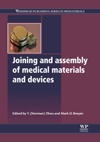Assembly by Die Casting

Design and manufacturing engineers looking for a better way to produce small component assemblies can imagine the following scenario.
Components to be assembled are placed inside a custom assembly tool containing a cavity where the components intersect. Molten zinc alloy is then injected under pressure into the cavity, where it solidifies in milliseconds, locking the components. Moments later, the tooling ejects the completed assembly, which emerges free of burrs and flash.
The process is called Assembly by Die Casting or sometimes Injected Metal Assembly. The process is used as the joining medium to assemble multiple small components up to 6 in. (150 mm) in diameter, and as the production method to form additional components directly on the assembly.
Most appliance OEMs who use the process tried one or more conventional assembly methods first, such as crimping, press fitting, shrink fitting, staking, swaging, riveting, adhesive bonding, soldering, brazing, and welding. Most admit they discovered Assembly by Die Casting only after these methods failed.
The main reasons for selecting Assembly by Die Casting are as follows.
- Accuracy: The custom-made assembly tooling holds multiple components in precise axial and concentric relationships to one another as they are joined, ensuring tight positional tolerances not possible or effective by any other method.
- Strength: Slight shrinkage of the zinc as it cools forms a strong mechanical lock on the components for long-term reliability and integrity.
- Quality control: Tooling precision gives the process almost infinite repeatability, eliminates secondary cleaning and deburring operations, and reduces time-consuming QC monitoring over long production runs.
- Economy: The process is a fast, one-step operation capable of producing up to 1,000 simple assemblies per hour without residual scrap.
Joining components
As a joining medium, Assembly by Die Casting is used by appliance manufacturers to assemble abrasive wheels, discs, electric motor rotors, gears, magnets, cups, and other components to posts, stems, shafts, and mandrels of virtually any material.
- Kenwood, the UK appliance maker, once employed eight workers per shift to attach two metal gears to a steel drive shaft for its line of food processors. Each drive-shaft assembly required press fitting, drilling, and pinning, a 3-min. operation.
Today, Assembly by Die Casting enables one machine operator to produce each drive-shaft assembly in 10 sec. to 12 sec. The one-step joining operation has realized a 75 percent savings in assembly labor costs and improved quality control. And by increasing assembly torque strength, the process has eliminated gearbox failures in the field.
- In Germany, air and drive technologist Pabst-Motoren GmbH joins a shaft to a cup and fan by die casting. The assembly tool located the shaft to within +/- .002 in. (0.05 mm) of the cup face. To eliminate wobble and eccentricity in the finished assembly, the tool holds each cup's outside diameter concentric to the outside diameter of the shaft to within .005 in. (0.13 mm) while the joint is injected.
Making components
As the production method to form small components and features of any shape directly onto the assembly, Assembly by Die Casting can reduce the number of premanufactured components that must be made and then joined. Typical features that can be added during the die-casting process include hubs, gears, keys, ratchets, cams, levers, external threads, sleeves, and pinions.
- A refrigerator/freezer control switch consisted of a seven-thread bushing staked to a stamped steel plate. Over time, the bushing loosened. By holding the 1.15-in. x 1.75-in. plate inside a tool and simultaneously die casting the .35-in. (18.9 mm) diameter threaded bushing in zinc alloy onto the plate, Assembly by Die Casting strengthened the assembly, eliminated component failures, and cut production cost by 50 percent.
- At Honeywell's Home & Building Controls Division, Minneapolis, an oil furnace temperature control switch was assembled by crimping a 1.46-in. x 0.55-in. x 0.020-in. slotted heat sink to a bimetal strip. This joining method caused air gaps.
Die casting the heat sink in zinc directly onto the bimetal strip provided a more solid assembly with better contact. For extra grip, designers modified a hole in the strip, enabling the zinc to form a hub on the strip's opposite side.
- Inside a postage meter, a crank shaft is assembled by forming a connecting plate from zinc alloy around two steel studs. Assembly by Die Casting places the studs perpendicular to the outside diameter of the plate face to within 0.013 in.
- A lawn trimmer supplier formerly used a nut-and-shaft assembly to connect a line spool to its drive shaft. The assembly was produced from a hex-shaped steel bar turned to produce the shaft with the nut in place.
Today, the hex nut is die cast directly onto the shaft. The process maintains concentricity of the hex to the shaft to within .002 in. Position of the nut on the shaft is held to +/- .002 in. Savings are incurred by a smaller steel shaft, less waste, and faster cycle time.
Assembly by Die Casting also is suitable for joining a wide range of non-metal materials, including plastics, ceramics, glass, paper, fibers, and elastomers. These fragile and heat-sensitive materials are left undamaged by the die-casting assembly process. The injected zinc alloy solidifies in milliseconds, and the water-cooled tooling continuously dissipates heat.
Looking for a reprint of this article?
From high-res PDFs to custom plaques, order your copy today!





